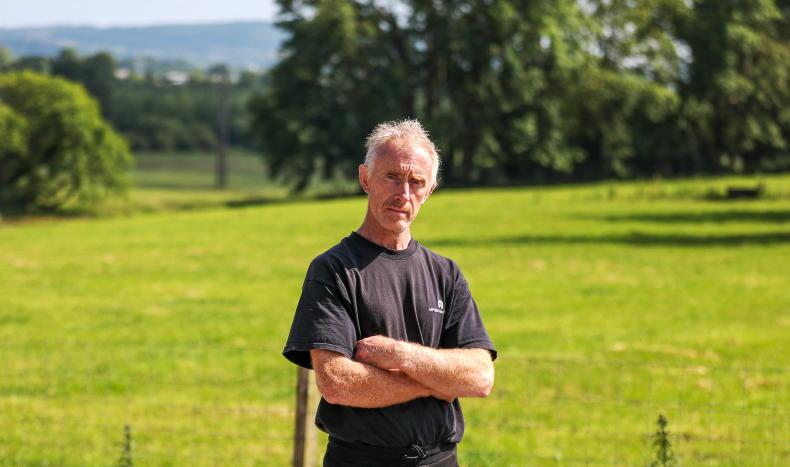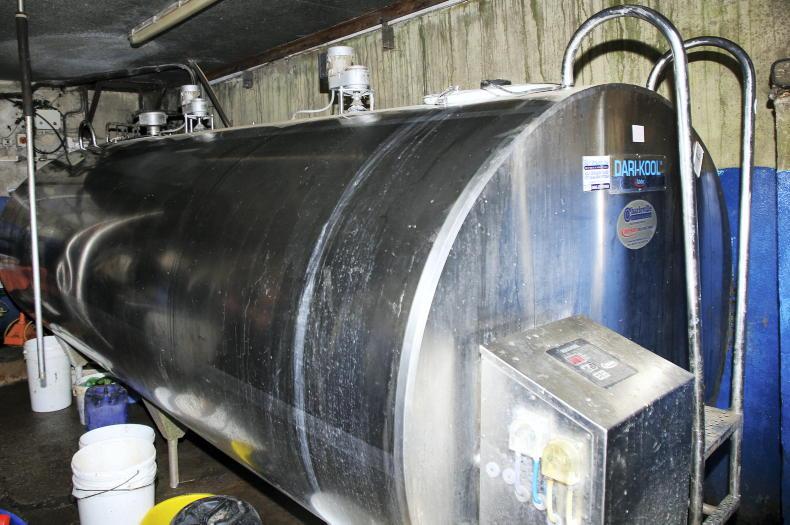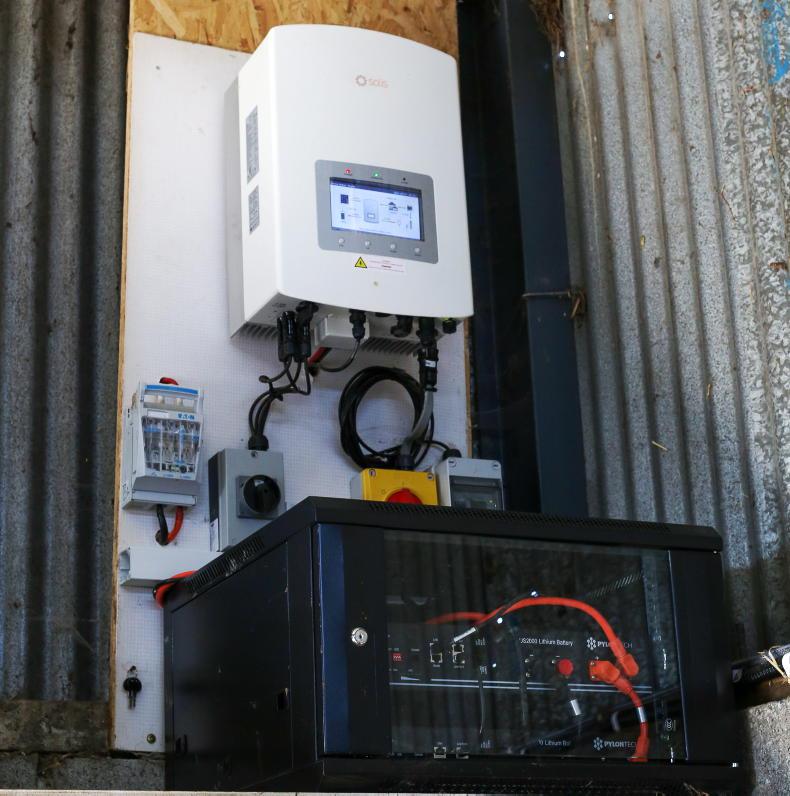Solar PV continues to grow in interest among the agricultural sector. This reliable, non-intrusive technology can provide real opportunities to reduce your farm’s electricity bill while helping to decarbonise the sector.
There are currently a number of grants and schemes in place to incentivise the uptake of solar PV systems.
It is important to match the size of the solar system with your farm’s energy usage, as you currently are not paid for excess electricity produced.
This is all about to change, as the Microgeneration Support Scheme (MSS) is due to be launched later this summer and will, for the first time, pay small producers of renewable electricity for their excess electricity which they export the grid.
Solar PV systems can fit in with most farms. However, the sectors with a high electricity requirement are likely to see the quickest return on investment.
These include the potato and horticulture sector, pigs and poultry as well as the dairy sector.
What grants are available?
A number of supports are available:
TAMS grants
A grant rate of 40% or 60% is available under TAMS for solar PV systems between 3kW (Kilowatts) and 11kW. TAMS grants are also available for battery storage up to 6kWp (kilowatts peak).Applications must be made via AgFoods.ie in advance of the installation on-farm.Sustainable Energy Authority of Ireland (SEAI)
Larger farms can claim 30% grant funding through the SEAI’s Better Energy Communities (BEC) scheme. This suits farmers who spend at least €3,000 on electricity per year. They will receive the 30% grant directly from SEAI when installation is complete and paid.
Payback period
Here we will look at the economics and practicalities of solar PV in the dairy sector. On average, energy accounts for around 15% of overhead costs on dairy farms, with heating, cooling and milking making up 75% of electricity demand.
The Irish Farmers Journal spoke to Noreen Lacey, head of business development with IFAC. She explained that if farmers want to lower their utility expenses, solar energy may help achieve this while also helping to future-proof the business and potentially generate additional income.
When looking at the business case for solar PV, the economics are favourable. Table 1 outlines the typical electricity costs of a 100-cow dairy farm.
Table 2 outlines the estimated payback period of a 6kWp solar system consisting of 20 panels and battery storage.
The payback period ranges from 8.5 to 3.4 years, depending on the levels of grant aid the farmer can avail of. The savings are based on substituting imported electricity for cheaper, on-farm-produced electricity and does not factor in any future support under the MSS.
Noreen also points out that as each individual’s tax situation is different, the example does not take into account the effect that income tax or company tax reliefs could have on the payback period. Depending on individual circumstances, tax relief could potentially reduce the payback period by up to 50%.
Other considerations
While solar energy can potentially reduce energy costs and generate additional income on your farm, it is important to examine your individual business case before deciding on investment. There are a number of other considerations which will affect the viability of the solar installation.
Accelerated capital allowances: In the year you purchase solar panels, you can deduct the full cost from your profits which will reduce your tax bill. In a year of high profits, investing in solar panels is worth considering as it gives an immediate tax write-off.VAT: Farmers can claim back the flat-rate VAT incurred on the purchase of a solar PV system, which is designed to be used mainly or solely in his or her farming business. The PV system must be named on the Triple E Product Register. SEAI maintains this public database register, which contains a list of products which comply with the energy efficiency criteria of the authority.
Case study: making the move
to solar to reduce costs
Ticey Allen of Ireland’s Fittest Family fame, farms in Newport, Co Tipperary, and made the decision to invest in solar PV panels last year. Ticey runs a spring-calving dairy farm and currently milks 124 cows.

Matt Allen pictured on his farm at Newport, Co Tipperary. \ Odhran Ducie
In 2015, after milk quotas were abolished, he began the process of increasing his spring-calving dairy herd of 80 cows. While farm output has increased from his current herd of 124 cows, so too have his costs. Tackling his electricity bills by making use of existing roof space was one of the main motivations behind exploring solar PV.
As with any dairy farm, peak electricity demand comes at milking time, as a result of operating the parlour and cooling and storing the milk. He milks at 6:30am in the morning and again at 5pm in his 14-unit Gascoigne parlour. Milking sessions normally take around one hour and 15 minutes to complete.

Milk must be stored at 4°C in the bulk tank. \ Odhran Ducie
For any non-dairy readers, milk is around 37°C when it leaves the cow and this must be cooled to 4°C for storage. To achieve this, the milk is passed through a double-stage plate cooler before entering the bulk tank. This process is energy intensive and, as such, represents a significant cost on dairy farms.

Control panel, inverter and battery storage. \ Odhran Ducie
Ticey contacted Enniskillen-based KB Electrical who install solar PV systems around Ireland and began to discuss options for his farm. He said an important element in helping him decide to invest in the system was to talk to another farmer, who had recently installed the solar PV. The farmer had a similar sized farm to his own. After hearing a generally positive report, he made the decision to invest and work began with the installers to size the system to his farm.
Ticey opted for a 6.1kwp solar PV system. Fifteen 410W (watt) JA solar panels were fitted to a corrugated tin roof on the farm and connected to a 5kw Solis hybrid inverter.
He also decided to install battery storage to allow him to make better use of electricity captured by the panels. This is particularly important for morning milkings or when the days are shorter, said Ticey.
In total, the panels, inverter and two 2.4kwh (kilowatt hour) Pylon Tec batteries cost €10,000 including VAT. He was able to secure a 40% TAMS grant, meaning the total cost of the system came to €6,000.
The system should give him an average yield of around 5490kWh, subject to weather. This should result in an estimated electricity saving of €900 per year. This means the payback period is expected to be around 6.6 years.
Ticey is still in his first year of the system but he expects that these provisional calculations will be accurate. During milking, when both his milking machine and milk cooler are running, his peak electricity demand reaches 9.16kW. He says that on average, 3.16kW of this is now supplied through the panels and battery.
While the system makes financial sense, this wasn’t the only motivation for installing solar PV on his farm, explained Ticey.
He hopes that in time, the emissions which are offset from producing his own electricity can be used to offset the total emissions of his farm.
“I think all carbon savings need to be taken into account, along with what we sequester in the soil, the trees and hedges,” he said.
Once the milk is cooled and the batteries are charged, Ticey doesn’t have any use for the excess electricity, so it is exported back to the grid. Currently he isn’t paid for this electricity, but this is about to change.
The MSS will allow Ticey to export excess electricity to the grid and be paid for it. Ticey said that once this scheme is operational, this will reduce the payback period even further. He said he will consider further expansion in time.
Solar PV continues to grow in interest among the agricultural sector. This reliable, non-intrusive technology can provide real opportunities to reduce your farm’s electricity bill while helping to decarbonise the sector.
There are currently a number of grants and schemes in place to incentivise the uptake of solar PV systems.
It is important to match the size of the solar system with your farm’s energy usage, as you currently are not paid for excess electricity produced.
This is all about to change, as the Microgeneration Support Scheme (MSS) is due to be launched later this summer and will, for the first time, pay small producers of renewable electricity for their excess electricity which they export the grid.
Solar PV systems can fit in with most farms. However, the sectors with a high electricity requirement are likely to see the quickest return on investment.
These include the potato and horticulture sector, pigs and poultry as well as the dairy sector.
What grants are available?
A number of supports are available:
TAMS grants
A grant rate of 40% or 60% is available under TAMS for solar PV systems between 3kW (Kilowatts) and 11kW. TAMS grants are also available for battery storage up to 6kWp (kilowatts peak).Applications must be made via AgFoods.ie in advance of the installation on-farm.Sustainable Energy Authority of Ireland (SEAI)
Larger farms can claim 30% grant funding through the SEAI’s Better Energy Communities (BEC) scheme. This suits farmers who spend at least €3,000 on electricity per year. They will receive the 30% grant directly from SEAI when installation is complete and paid.
Payback period
Here we will look at the economics and practicalities of solar PV in the dairy sector. On average, energy accounts for around 15% of overhead costs on dairy farms, with heating, cooling and milking making up 75% of electricity demand.
The Irish Farmers Journal spoke to Noreen Lacey, head of business development with IFAC. She explained that if farmers want to lower their utility expenses, solar energy may help achieve this while also helping to future-proof the business and potentially generate additional income.
When looking at the business case for solar PV, the economics are favourable. Table 1 outlines the typical electricity costs of a 100-cow dairy farm.
Table 2 outlines the estimated payback period of a 6kWp solar system consisting of 20 panels and battery storage.
The payback period ranges from 8.5 to 3.4 years, depending on the levels of grant aid the farmer can avail of. The savings are based on substituting imported electricity for cheaper, on-farm-produced electricity and does not factor in any future support under the MSS.
Noreen also points out that as each individual’s tax situation is different, the example does not take into account the effect that income tax or company tax reliefs could have on the payback period. Depending on individual circumstances, tax relief could potentially reduce the payback period by up to 50%.
Other considerations
While solar energy can potentially reduce energy costs and generate additional income on your farm, it is important to examine your individual business case before deciding on investment. There are a number of other considerations which will affect the viability of the solar installation.
Accelerated capital allowances: In the year you purchase solar panels, you can deduct the full cost from your profits which will reduce your tax bill. In a year of high profits, investing in solar panels is worth considering as it gives an immediate tax write-off.VAT: Farmers can claim back the flat-rate VAT incurred on the purchase of a solar PV system, which is designed to be used mainly or solely in his or her farming business. The PV system must be named on the Triple E Product Register. SEAI maintains this public database register, which contains a list of products which comply with the energy efficiency criteria of the authority.
Case study: making the move
to solar to reduce costs
Ticey Allen of Ireland’s Fittest Family fame, farms in Newport, Co Tipperary, and made the decision to invest in solar PV panels last year. Ticey runs a spring-calving dairy farm and currently milks 124 cows.

Matt Allen pictured on his farm at Newport, Co Tipperary. \ Odhran Ducie
In 2015, after milk quotas were abolished, he began the process of increasing his spring-calving dairy herd of 80 cows. While farm output has increased from his current herd of 124 cows, so too have his costs. Tackling his electricity bills by making use of existing roof space was one of the main motivations behind exploring solar PV.
As with any dairy farm, peak electricity demand comes at milking time, as a result of operating the parlour and cooling and storing the milk. He milks at 6:30am in the morning and again at 5pm in his 14-unit Gascoigne parlour. Milking sessions normally take around one hour and 15 minutes to complete.

Milk must be stored at 4°C in the bulk tank. \ Odhran Ducie
For any non-dairy readers, milk is around 37°C when it leaves the cow and this must be cooled to 4°C for storage. To achieve this, the milk is passed through a double-stage plate cooler before entering the bulk tank. This process is energy intensive and, as such, represents a significant cost on dairy farms.

Control panel, inverter and battery storage. \ Odhran Ducie
Ticey contacted Enniskillen-based KB Electrical who install solar PV systems around Ireland and began to discuss options for his farm. He said an important element in helping him decide to invest in the system was to talk to another farmer, who had recently installed the solar PV. The farmer had a similar sized farm to his own. After hearing a generally positive report, he made the decision to invest and work began with the installers to size the system to his farm.
Ticey opted for a 6.1kwp solar PV system. Fifteen 410W (watt) JA solar panels were fitted to a corrugated tin roof on the farm and connected to a 5kw Solis hybrid inverter.
He also decided to install battery storage to allow him to make better use of electricity captured by the panels. This is particularly important for morning milkings or when the days are shorter, said Ticey.
In total, the panels, inverter and two 2.4kwh (kilowatt hour) Pylon Tec batteries cost €10,000 including VAT. He was able to secure a 40% TAMS grant, meaning the total cost of the system came to €6,000.
The system should give him an average yield of around 5490kWh, subject to weather. This should result in an estimated electricity saving of €900 per year. This means the payback period is expected to be around 6.6 years.
Ticey is still in his first year of the system but he expects that these provisional calculations will be accurate. During milking, when both his milking machine and milk cooler are running, his peak electricity demand reaches 9.16kW. He says that on average, 3.16kW of this is now supplied through the panels and battery.
While the system makes financial sense, this wasn’t the only motivation for installing solar PV on his farm, explained Ticey.
He hopes that in time, the emissions which are offset from producing his own electricity can be used to offset the total emissions of his farm.
“I think all carbon savings need to be taken into account, along with what we sequester in the soil, the trees and hedges,” he said.
Once the milk is cooled and the batteries are charged, Ticey doesn’t have any use for the excess electricity, so it is exported back to the grid. Currently he isn’t paid for this electricity, but this is about to change.
The MSS will allow Ticey to export excess electricity to the grid and be paid for it. Ticey said that once this scheme is operational, this will reduce the payback period even further. He said he will consider further expansion in time.









 This is a subscriber-only article
This is a subscriber-only article











SHARING OPTIONS: